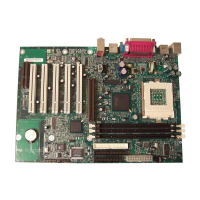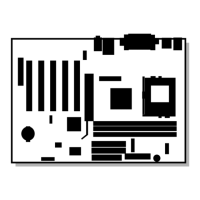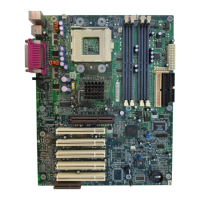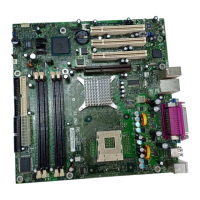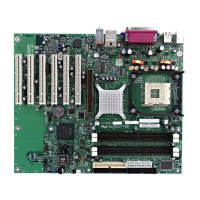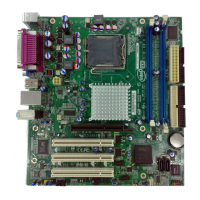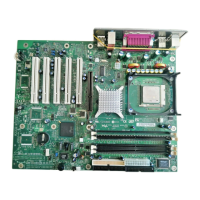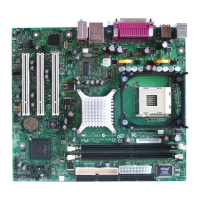Product Description
21
Table 5. Supported Memory Configurations
DIMM
Capacity
Number of
Sides
SDRAM
Density
SDRAM Organization
Front-side/Back-side
Number of
SDRAM devices
32 MB DS 16 Mbit 2 M X 8 / 2 M X 8 16 (Note 1)
32 MB SS 64 Mbit 4 M X 16 / empty 4
48 MB DS 64 / 16 Mbit 4 M X 16 / 2 M X 8 12 (Notes 1 and 2)
64 MB DS 64 Mbit 4 M X 16 / 4 M X 16 8
64 MB SS 64 Mbit 8 M X 8 / empty 8
64 MB SS 128 Mbit 8 M X 16 / empty 4
96 MB DS 64 Mbit 8 M X 8 / 4 M x 16 12 (Notes 1 and 2)
96 MB DS 128 / 64 Mbit 8 M X 16 / 4 M x 16 8 (Notes 1 and 2)
128 MB DS 64 Mbit 8 M X 8 / 8 M X 8 16 (Note 1)
128 MB DS 128 Mbit 8 M X 16 / 8 M X 16 8 (Notes 1 and 2)
128 MB SS 128 Mbit 16 M X 8 / empty 8
128 MB SS 256 Mbit 16 M X 16 / empty 4
192 MB DS 128 Mbit 16 M X 8 / 8 M x 16 12 (Notes 1 and 2)
192 MB DS 128 / 64 Mbit 16 M X 8 / 8 M x 8 16 (Notes 1 and 2)
256 MB DS 128 Mbit 16 M X 8 / 16 M X 8 16 (Notes 1 and 2)
256 MB DS 256 Mbit 16 M X 16 / 16 M X 16 8 (Notes 1 and 2)
256 MB SS 256 Mbit 32 M X 8 / empty 8
512 MB DS 256 Mbit 32 M X 8 / 32 M X 8 16 (Notes 1 and 2)
Notes
1. If the number of SDRAM devices is greater than nine, the DIMM will be double sided.
2. Front side population / back side population indicated for SDRAM density and SDRAM organization.
CAUTION
To be fully compliant with all applicable Intel
®
SDRAM memory specifications, the motherboard
should be populated with DIMMs that support the Serial Presence Detect (SPD) data structure. If
your memory modules do not support SPD, you will see a notification to this effect on the screen at
power up. The BIOS will attempt to configure the memory controller for normal operation.
However, DIMMs may not function under the determined frequency. You can access the PC Serial
Presence Detect Specification at:
http://www.intel.com/design/pcisets/memory/
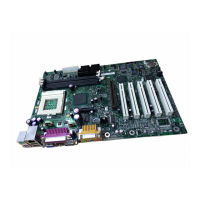
